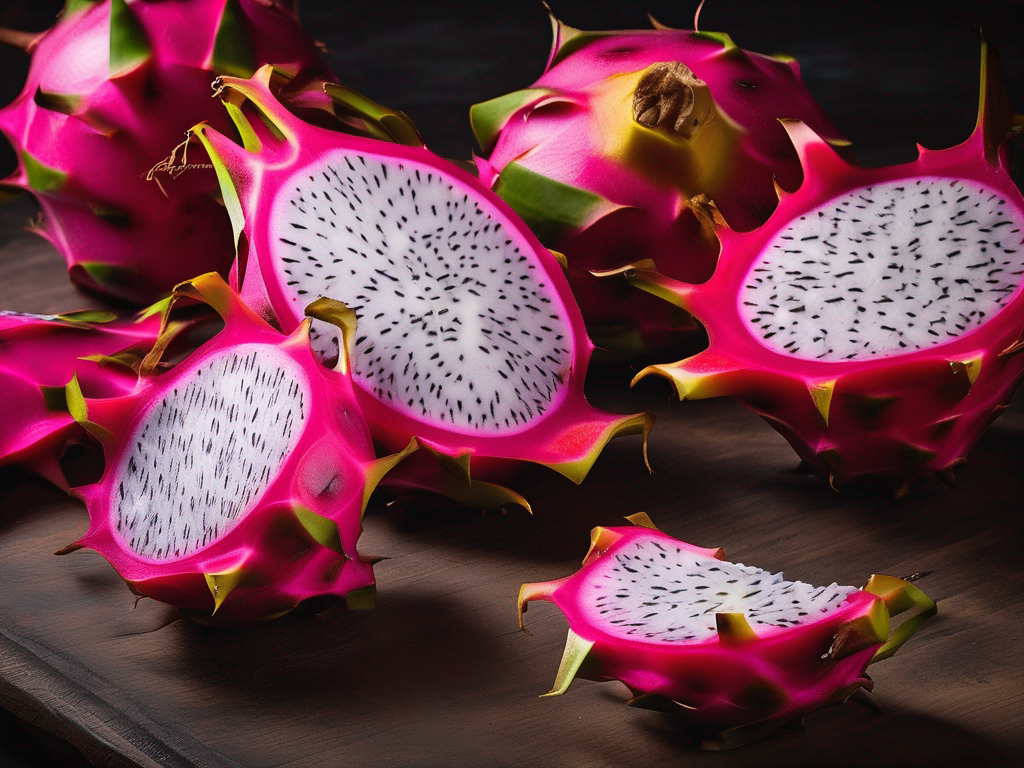
Is Your Dragon Fruit Safe to Eat? How to Spot Spoilage
Get Your Free Food Safety Cheat Sheet
30 most common foods with instant answers. Print it and stick it on your fridge—completely free!
Is Your Dragon Fruit Safe to Eat? How to Spot Spoilage
Dragon fruit, also known as pitaya, is a unique and exotic fruit with a vibrant pink or white flesh dotted with tiny black seeds. Its sweet and refreshing taste makes it a popular choice for smoothies, salads, and desserts. However, like any fresh produce, dragon fruit can spoil if not stored and handled properly. In this blog post, we will discuss how to tell if your dragon fruit has gone bad and should not be eaten. (Dragon fruit)
Signs of Spoilage in Dragon Fruit
1. Mold Growth
- Mold growth on the skin or flesh of the dragon fruit is a clear sign that it has gone bad.
- Mold can appear as fuzzy white, green, or black spots on the fruit.
2. Soft or Mushy Texture
- A healthy dragon fruit should feel firm and slightly soft to the touch.
- If the fruit feels overly soft or mushy, it is likely overripe and starting to spoil.
3. Off Odor
- Spoiled dragon fruit may emit a sour or unpleasant odor.
- If the fruit smells off or rotten, it is best to discard it.
4. Discoloration
- Changes in color, such as darkening or browning of the flesh, can indicate spoilage.
- A dragon fruit with extensive discoloration should not be consumed.
5. Wrinkled Skin
- A fresh dragon fruit should have smooth, bright skin.
- Wrinkles or shriveling of the skin can be a sign of dehydration and spoilage.
Proper Storage Tips for Dragon Fruit
To extend the shelf life of your dragon fruit and prevent spoilage, follow these storage tips:
-
Refrigeration: Store whole dragon fruit in the refrigerator to slow down the ripening process and maintain freshness.
-
Avoid Moisture: Keep the fruit dry to prevent mold growth. Place it in a perforated plastic bag or container with paper towels to absorb excess moisture.
-
Separate from Ethylene-Producing Fruits: Dragon fruit is sensitive to ethylene gas, which can speed up ripening and spoilage. Keep it away from ethylene-producing fruits like bananas and apples.
-
Use airtight containers: If you have cut or sliced dragon fruit, store it in an airtight container in the refrigerator to preserve its freshness and flavor.
Safety Precautions for Handling Dragon Fruit
When handling and preparing dragon fruit, it is essential to follow these safety precautions to prevent foodborne illness:
1. Wash Hands Thoroughly
- Before touching the fruit, wash your hands with soap and water to remove any dirt or bacteria.
2. Clean Cutting Tools
- Use clean knives and cutting boards to prevent cross-contamination with other foods.
3. Rinse the Fruit
- Rinse the dragon fruit under cool, running water before cutting or peeling to remove any dirt or bacteria on the skin.
4. Store Properly
- After cutting the fruit, store any leftovers in the refrigerator promptly to prevent bacterial growth.
Conclusion
In conclusion, dragon fruit is a delicious and nutritious fruit that can add a pop of color and flavor to your meals. By knowing how to identify signs of spoilage and following proper storage and handling practices, you can enjoy fresh and safe dragon fruit. Remember to inspect the fruit for mold growth, soft texture, off odor, discoloration, and wrinkled skin before consuming it. When in doubt, it is best to err on the side of caution and discard any questionable dragon fruit. By taking these precautions, you can savor the unique taste and health benefits of dragon fruit without risking foodborne illness. (Dragon fruit)
Authoritative Food Safety References
These agencies and university labs inform every tip and health precaution we publish.
USDA FoodKeeper – Cold Storage Guidelines
Official refrigerator, freezer, and pantry timelines maintained by the U.S. Department of Agriculture.
Visit USDA FoodKeeperFDA Produce Safety Rule & Grower Guidance
Field-to-fridge handling practices that prevent contamination of fruits, vegetables, and leafy greens.
Visit FDA Produce SafetyCDC Foodborne Illness Prevention Hub
Surveillance-backed guidance on pathogens, symptoms, and steps to reduce foodborne illness risk.
Visit CDC Food SafetyUC Davis Postharvest Technology Center
University research detailing optimal storage atmospheres for produce after harvest.
Visit UC Davis PostharvestPenn State Extension – Home Food Preservation & Safety
Peer-reviewed extension bulletins on safe canning, chilling, and reheating practices.
Visit Penn State ExtensionGet Your Free Food Safety Cheat Sheet
30 most common foods with instant answers. Print it and stick it on your fridge—completely free! Want more? Upgrade to the complete guide with 70+ foods.
Scan your food directly and get instant safety info using our AI-powered camera feature.